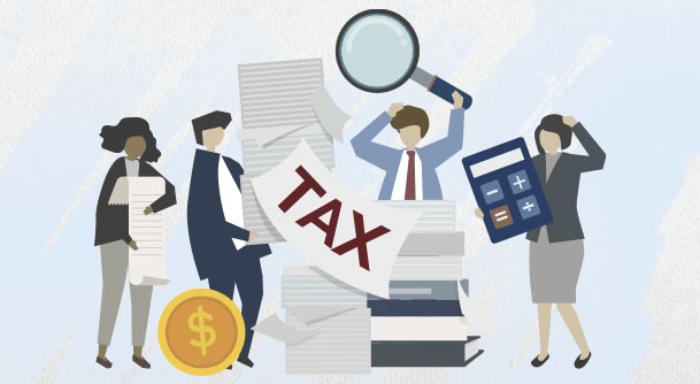How Does an Income Tax Calculator Help in Financial Planning?
Blog Title
366 |
6/13/25 8:30 AM |
Last-minute scrambling and misunderstandings are common during the tax filing period. Whether you're a retiree, a company owner, or a salaried employee, figuring out taxes can be confusing at times. This is due to changes in tax regulations, exemptions, and deductions. But what if there was an easy method to make this procedure less complicated?
You can determine your tax liabilities in a matter of seconds by using an income tax calculator, which does the calculations for you. It can be an asset for financial planning, tax benefits, and tax saving investment choices.
Let's look at how you can use it to your advantage.
What is an Income Tax Calculator, and Why Should You Use it?
A tax calculator is a free online tool that can assist you in estimating your tax due for a fiscal year. It instantly determines how much tax you must pay by inputting information about your income, investments, and deductions.
Rather than dealing with lengthy tax calculations, you can access this tool to:
Find out how much you owe in taxes in a minute.
Determine possible tax benefits.
Plan your finances more confidently.
How an Income Tax Calculator Simplifies Tax Planning
1. Provides Instant and Accurate Tax Estimates
Tax calculations done manually can be difficult and are susceptible to human errors. Income tax calculators take into account the most recent tax slabs, exemptions, and deductions. Plus, the calculator is completely automated once you enter your income and other details. This allows you to instantly calculate your tax liability without worrying about miscalculations or human errors.
For instance, if you invest ₹1.5 lakh under Section 80C and earn ₹10 lakh annually, the calculator will immediately display the amount of tax you must pay after deductions.
2. Helps You Plan Your Finances More Effectively
You can make better financial decisions if you know your tax burden beforehand. It lets you decide:
How much money should be set aside for investment plans, savings, and expenses.
If more tax-free investments are required.
How to modify your pay scale for more tax benefits.
3. Saves You Time and Effort
There's no need for long calculations! You can quickly generate tax estimates with an income tax calculator. Particularly when preparing your income tax returns, this saves time and work.
It facilitates tax filing for salaried persons by estimating deductions such as the Standard Deduction and House Rent Allowance (HRA).
4. Helps Identify Tax-Saving Opportunities
Most taxpayers lose out on tax benefits and deductions just because they are unaware of them. An income tax calculator indicates potential ways to reduce taxes, including:
ELSS, PPF, life insurance, and other investment plans come under Section 80C of the Income Tax Act of 1961.
Health insurance premium deductions under Section 80D.
Home loan interest deduction under Section 24(b).
5. Makes Investment Planning Easier
Your tax planning approach should be in line with the investments you make. Using an income tax calculator, you can experiment with different investment amounts and see how they affect your tax benefits.
For example, the calculator can help you make a better decision if you're unsure whether to invest in an ELSS or a fixed deposit. This can be done by a calculator as it displays how each option impacts your tax burden.
6. Ensures Compliance with Tax Regulations
Penalties or legal issues can come up from filing taxes incorrectly. An income tax calculator helps you ensure:
Precise tax returns.
Keeping accurate records.
On-time tax payments.
Who Can Benefit from an Income Tax Calculator?
1. Salaried Employees
You can use an income tax calculator to examine how your taxes are affected by the various components of your salary, such as basic pay, HRA, bonuses, and allowances. This allows you to:
Confirm that you are taking advantage of all available deductions, such as the HRA exemptions.
Make decisions and plan for the tax-saving investment in advance.
Determine how it may affect your taxes before you receive a bonus or pay increase.
2. Business Owners & Freelancers
Small company owners, entrepreneurs, and freelancers tend to have inconsistent incomes, which makes handling taxes challenging. An income tax calculator is useful in this situation.
This tool allows you to:
To avoid fines, estimate the advance tax you must pay each quarter.
Include deductions for company expenditures such as software subscriptions, office rent, and travel expenses.
Make effective plans for your assets and savings, even with an uncertain income.
3. Senior Citizens & Retirees
Although retirement should be stress-free, taxes are levied even after you stop working. An income tax calculator can assist you if you get income from investments, pensions, fixed deposits, or rental properties.
Check to see if you are eligible for senior citizen tax benefits, such as larger exemption limits and more deductions.
Calculate your pension and interest income taxes so you may make responsible withdrawals.
Schedule your pension withdrawals to guarantee a consistent, tax-efficient cash flow.
Takeaway
Planning your taxes doesn't have to be difficult. Using an income tax calculator, you can find savings possibilities and tax benefits and make a better investment plan. This tool helps you maintain financial management whether you're a retiree, freelancer, or professional with a salary.
Use it to make wise decisions and ensure a financially stress-free future instead of worrying about taxes at the last minute. After all, the more you know about your taxes, the more control you have over your finances!
FAQs
1. How do I calculate my tax liabilities?
Simply enter your income, deductions, and exemptions into an income tax calculator. Based on the latest tax slabs, it will instantly show your estimated tax amount.
2. Why is tax planning important?
By lowering your tax liability legally, tax planning helps you save money and effectively manage your finances.
3. What are the different income tax slabs?
According to the new tax system in India, the income tax slabs for FY 2025–26 (AY 2026–27) are as follows:
No taxes on income up to ₹4,00,000.
5% on ₹4,00,001 to ₹8,00,000.
10 % on ₹8,00,001 to ₹12,00,000.
15% on ₹12,00,001 to ₹16,00 million.
20% on ₹16,000,000 to ₹20,000,000.
25% on ₹20,000,000 to ₹24,000,000.
30% for ₹24,00,000 and above.










